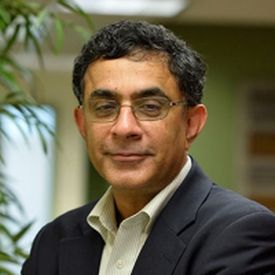Urbanisation in India is reshaping established social and economic patterns of behaviour, in ways that scholars are yet to fully comprehend. India’s rapid urbanisation invites several pressing questions: What does the transformation of settlement patterns mean for social cleavages and hierarchies in the country? Will some hierarchies be amplified, and others attenuated or transformed? In particular, how will urbanisation affect the social norms and practices that govern the economic, political, and social agency of women? This e-symposium will locate answers to these questions, drawing on a unique survey of 15,000 households across four urban clusters in north India.
By the end of the first decade of the 21st century, for the first time in human history, over half of the world was living in urban areas. Nowhere is this transition more apparent than in India, which is expected to see its urban population rise from around 483 million in 2020 to a projected 877 million in 2050 – more than a million per month over the next three decades (United Nations Population Division, 2018). The projected increase of around half a billion between 2010 and 2050 will be the largest rural-to-urban transformation in the world – even bigger than China, when all is said and done. Given the sheer demographic magnitude of urbanisation unfolding in India, understanding the political, economic, and social implications of this massive structural shift is vital for the country’s future.
Urbanisation is as much a social process – transforming behaviour, culture, and social institutions over time – as it is an economic and spatial process. Urbanisation has the power to transform core societal organisations such as the family, the nature and density of social interactions, the types of work and diversity of occupations, and personal autonomy. Cities are sites of social change that offer possibilities for social mobility by disrupting the social stratifications of rural societies (Kapur 2017). By ‘social change’, we refer to the ways in which the rules governing a given social structure undergo redefinition or reinvention on account of endogenous and exogenous changes.
In this e-symposium, our aim is to provide an overall assessment of how gender, urbanisation, and social change intersect in 21st century India. The articles – which highlight findings published in a new special issue of the journal Urbanisation – draw on data from a survey undertaken during January-August 2019 by the Center for the Advanced Study of India (CASI) at the University of Pennsylvania. The sample consists of approximately 15,000 randomly sampled households across four north Indian urban clusters: Dhanbad (Jharkhand), Indore (Madhya Pradesh), Patna (Bihar), and Varanasi (Uttar Pradesh). Our definition of an urban cluster captures the core city, small urban areas in the periphery, as well as peri-urban villages that are economically dependent upon the city. Therefore, the analyses look at the variation across settlement types spanning the rural-urban spectrum.
While the articles in this e-symposium are motivated by a concern with India’s low (and, according to some measures, declining) female labour force participation (Fletcher et al. 2017, Deshpande and Singh 2021), they also focus on the larger ecosystem within which labour markets function. In doing so, they bring to light new gender-disaggregated data on labour markets, social attitudes, empowerment and individual agency, and media exposure1.
We begin with an examination of the factors that shape women’s employment outside of the home. We describe the results of a survey experiment designed to disentangle the relative impact of the proximity of a suitable job, a negative income shock, and extra assistance in the home on willingness to enter the labour force (Chatterjee and Sircar 2021).
We then explore women’s agency along two key dimensions – the ability to make independent decisions within the household, and the ability to travel outside of the home. We study the connection between women’s ability to participate meaningfully in household decisions and their labour force participation (Maxwell and Vaishnav 2021). We then turn our attention to examining women’s agency outside, rather than inside, of the household by scrutinising women’s mobility along two dimensions: (a) Those who can leave the home (and to which destinations); and (b) Those who require permission to leave the home (and from whom) (Mehta and Sai 2021).
We conclude by studying how social inequalities, local contexts, and media consumption are shaping social and political preference, and attitudes. For instance, how do selected marital hierarchies – age, education differences, and exogamy – impact both partners’ ideas about women’s work (Karia and Mehta 2021)? And what are the implications of media and information exposure for the political independence of women (Badrinathan et al. 2021)?
In the years to come, the relationship between urbanisation and social change is unlikely to be a linear one. The extent to which social inequalities are reduced or reinforced will depend greatly on how State and society respond to mounting challenges, many of them self-imposed. This e-symposium hopes to contribute to our collective understanding of the interplay between urbanisation, social change, and gender empowerment, occurring in a significant swath of north India.
The research summarised in this e-Symposium was made possible thanks to the generous support of the Ford Foundation. The researchers also acknowledge additional support from the International Growth Centre (IGC) and the United Kingdom Foreign, Commonwealth & Development Office.
I4I is on Telegram. Please click here (@Ideas4India) to subscribe to our channel for quick updates on our content
Note:
- See Raman (2020), for a discussion of how the lack of gender-disaggregated data in India hampers policymaking efforts.
Further Reading
- Badrinathan, Sumitra, Deepaboli Chatterjee, Devesh Kapur and Neelanjan Sircar (2021), “Partisan Disagreement: The Role of Media, Personal Networks and Gender in Forming Political Preferences”, Urbanisation.
- Badrinathan, S, D Chatterjee, D Kapur and N Sircar (2021), ‘Urbanisation, gender, and social change: Role of the media in shaping women’s political preferences’, Ideas for India, 10 December.
- Chatterjee, Deepaboli and Neelanjan Sircar (2021), “Why Is Female Labor Force Participation So Low in India?”, Urbanisation.
- Chatterjee, D and N Sircar (2021), ‘Urbanisation, gender, and social change: Why is female labour force participation so low in India?’, Ideas for India, 6 December.
- Deshpande, Ashwini and Jitendra Singh (2021), ‘Dropping Out, Being Pushed Out or Can’t Get In? Decoding Declining Labour Force Participation of Women’, IZA Discussion Paper 14639.
- Fletcher, EK, R Pande and CT Moore (2017), ‘Women and Work in India: Descriptive Evidence and a Review of Potential Policies’, HKS Faculty Research Working Paper Series RWP18-004.
- Kapur, Devesh (2017), “How Will India’s Urban Future Affect Social Identities?”, Urbanisation, 2(1): 1-8.
- Kapur, Devesh, Neelanjan Sircar and Milan Vaishnav (2021), “Gender, Social Change and Urbanisation in Four North Indian Clusters”, Urbanisation.
- Karia, Shubhangi and Tanvi Mehta (2021), “Working Through Marriage: Effects of Marital Inequalities on Perceptions of Women’s Employment”, Urbanisation.
- Karia, S and T Mehta (2021), ‘Urbanisation, gender, and social change: Intra-marital hierarchies and perceptions about working mothers’, Ideas for India, 9 December.
- Maxwell, Megan and Milan Vaishnav (2021), “Working Women’s Decision-Making Power at Home: Evidence from Four North Indian Urban Clusters”, Urbanisation.
- Maxwell, M and M Vaishnav (2021), ‘Urbanisation, gender, and social change: Do working women enjoy more agency?’, Ideas for India, 7 December.
- Mehta, Vidisha and Harish Sai (2021), “Freedom of Movement: Studying Women’s Mobility in North India”, Urbanisation.
- Mehta, V and H Sai (2021), ‘Urbanisation, gender, and social change: Women’s mobility in north India’, Ideas for India, 8 December.
- United Nations Population Division (2018), ‘World Urbanization Prospects: The 2018 Revision, Online Edition’, Department of Economic and Social Affairs, United Nations.




 06 December, 2021
06 December, 2021 






Comments will be held for moderation. Your contact information will not be made public.